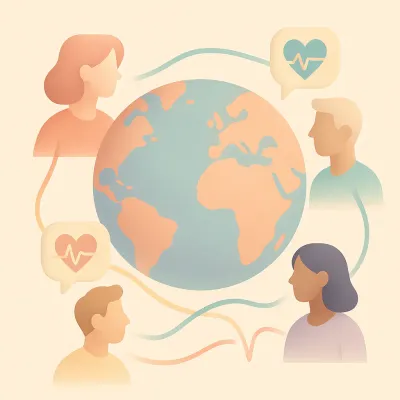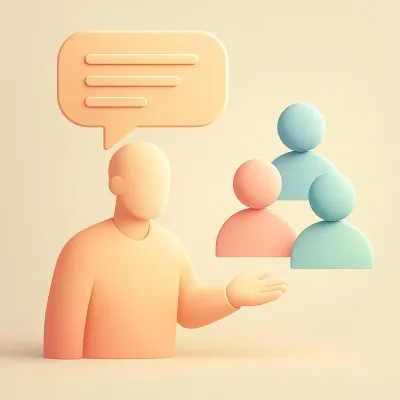The transition to working from home has been challenging for most. Work stress is at an all-time high (69% of employees are experiencing burnout symptoms), impacting mental health and productivity. This WFH "experiment" isn't a short-term exercise that we can voluntarily exit. As companies scramble to find the right tools and platforms to support employees, the employee's perspective helps us understand what is needed most.
This WFH "experiment" isn't a short-term exercise that we can voluntarily exit.
Employees are disengaged and distracted. While some are comfortable with self-isolation, others are disoriented and dismayed. There is no clear divide between home-life and work-life. They are unable to recharge and bring their best to work every day.
The key challenges organizations and employees face are:
- Company alignment
- Building and maintaining relationships
- Employee well-being
- Community building
- Motivation
Company Alignment
In the days before the pandemic, company alignment was challenging enough. Getting employees to understand company/team/individual objectives and keeping them oriented towards the same goals was difficult. Many organizations introduced agile practices and OKRs to facilitate alignment.
Did it work? Sometimes. A growth mindset and the willingness and ability to share and receive feedback was missing. To achieve alignment, everyone must communicate progress, blockers, and results timely and effectively.
The pandemic only adds complexity. Businesses must adapt and re-think business models and execute differently, with fewer resources and across a more significant communication divide. Employee expectations are changing too. Company alignment is more critical now than it has ever been.
Outcome: Increased Productivity
Building and Maintaining Relationships
Working from home has created a detrimental communication gap, and it isn't due to a lack of tools. Communication practices and behaviors have shifted, and many have yet to figure out how. And as workloads increase, the first aspect of our work-life that takes a hit is our relationship building. There is not enough time for it.
Relationships are more critical to productivity and resilience than we understand at first glance. Without strong relationships, employees are not comfortable or willing to share or receive critical feedback. Would you like to receive critical feedback from someone you hardly knew?
With strong relationships in place, mistakes can happen without overreaction and unintended consequences. Critical feedback is shared freely between managers and their teams. Communication is more transparent, meaningful, and productive.
Outcome: More Resilience
Community Building
Community (team) building plays a vital part in fostering cooperation in the workplace. High impact work doesn't happen in isolation. And collaboration requires having a healthy existing network and exercising that network in the right manner.
Company off-sites have been the de facto way to initiate network building and strengthen bonds, but the pandemic has put activities on hold. Virtual team building sessions have emerged as replacements but require a lot of effort and energy from already over-exerted team leaders.
Outcome: More Inclusion & Company Embeddedness
Employee Wellness
Mental health is on the decline, and research shows that most employees struggle to ask for help. Employee burnout is most commonplace among top talent, as they are selected to lead transformational changes in addition to their workstreams. Signs of employee burnout include:
- Reduced efficiency and energy
- Lowered levels of motivation
- Increased errors
- Fatigue
- Irritability
Employee wellness and well-being require constant monitoring and check-ins. People managers are in the best position to help by understanding underlying issues (i.e., personal or work challenges), providing needed resources, and reprioritizing work.
Outcome: Improved Wellness
Motivation
Traditional approaches used to motivate talent are not working. Companies are over-reliant on extrinsic motivators (salary, incentives, and bonuses). When companies cannot increase pay or provide bonuses during a global crisis, what happens to motivation then?
Intrinsic motivators such as recognition are most potent. Praise and appreciation are overwhelmingly the reasons top talent go above and beyond in the workplace. What's more, meaningful recognition is free to give but is missing because we lack the right habits and behavior —enter company culture.
Outcome: High-performance culture
The WFH experiment, like any experiment, requires meaningful measurement and action to get right. And we need to get it right if we are to move our businesses forward in the right direction. Company success is tied directly to the motivations and capabilities of employees. And people-first leadership will be the difference-maker in this new world order.
At Happily.ai, we help companies succeed by focusing on cultural and behavioral change using real-time measurement and people analytics. Happily is a one-of-a-kind platform that drives unprecedented feedback, recognition, insights, coaching, and more. Visit our website to learn more, request a demo, and be on your way to activating your talent.




![[HR & Manager Tips] 5 เทคนิคของการทำ Conflict Management ภายในบริษัท เพื่อนำไปสู่ Conflict Solutions](/content/images/size/w250/2021/02/charl-folscher-0d3sN22lH0c-unsplash.jpg)




